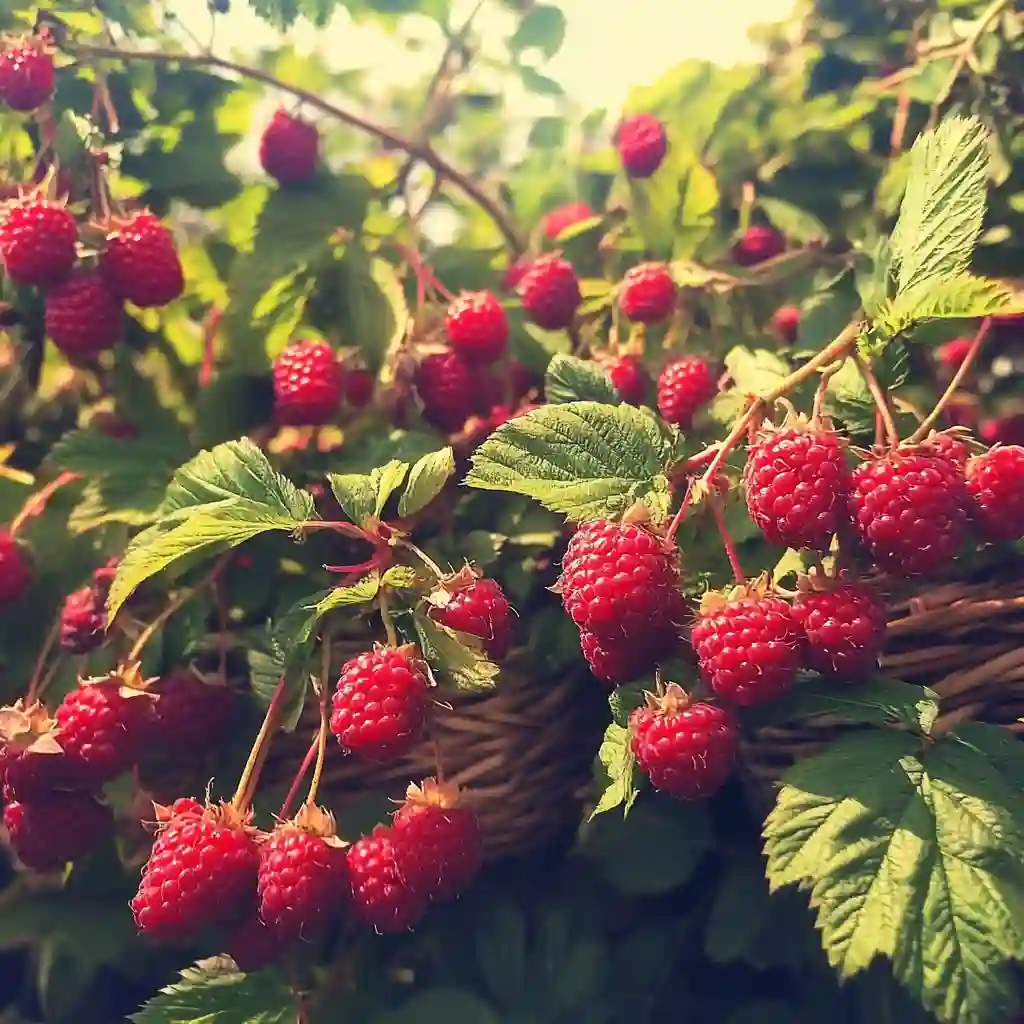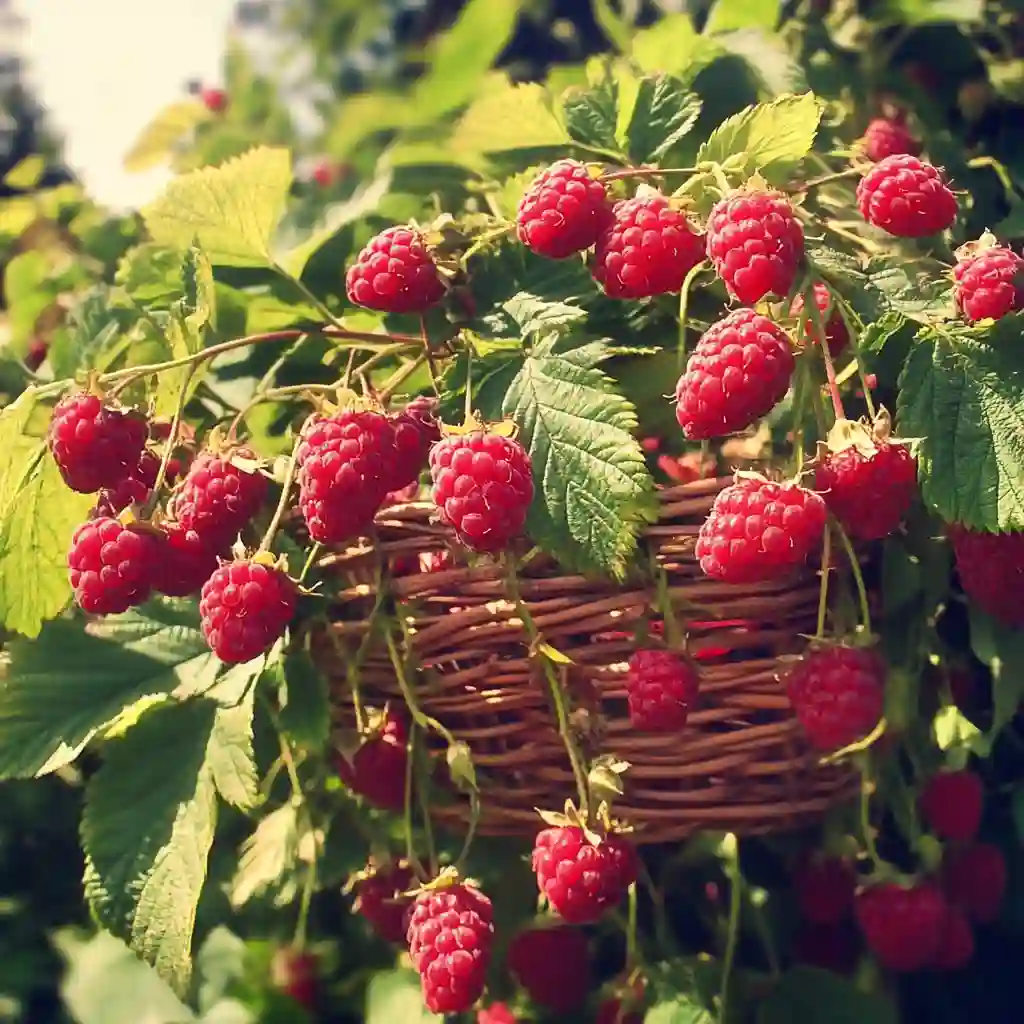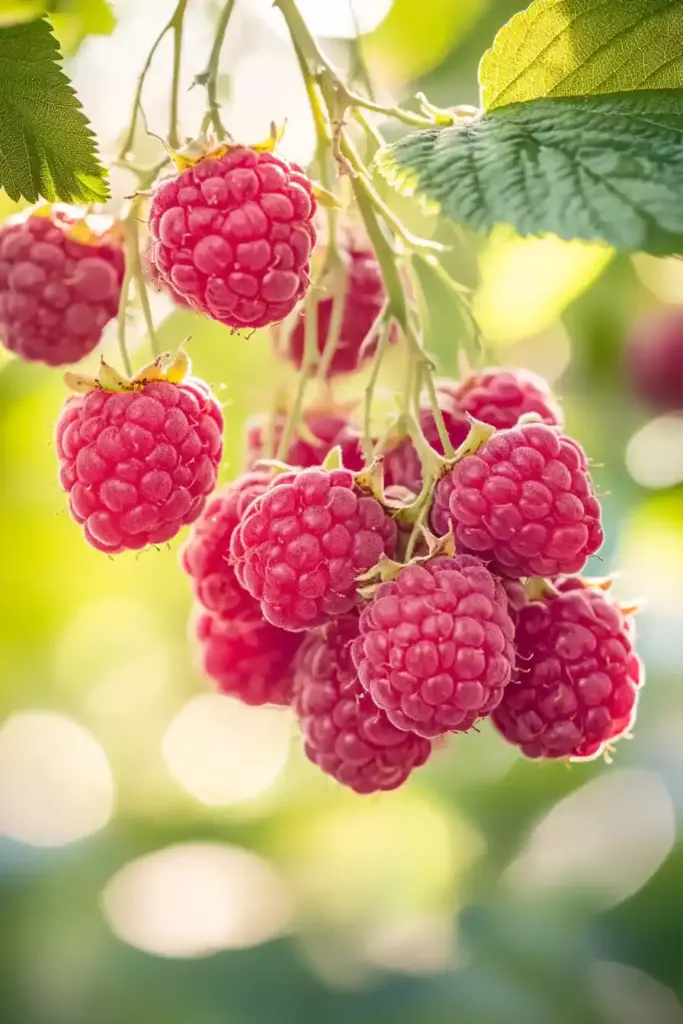There’s nothing quite like the taste of a sun-warmed raspberry picked fresh off the cane—and with a little know-how, you can grow baskets full of these antioxidant-rich berries no matter where you live. Whether you’re working with a small backyard, a homestead, or even a sunny patio space, raspberries are surprisingly easy to grow and maintain.
Raspberries (Rubus idaeus), beloved for their sweet-tart flavor, are not only delicious but also incredibly nutrient-dense. These fiber-rich berries contain more vitamin C than oranges, along with potassium, manganese, folic acid, and powerful antioxidants like beta-carotene. But here’s the catch: raspberries begin to lose their nutrients soon after harvest. That’s why growing your own isn’t just rewarding—it’s one of the best ways to enjoy their full nutritional punch.
The best part? Raspberries are resilient. With cold-hardy and heat-tolerant cultivars now available, you can find varieties that thrive in USDA Zones 3 through 9. Plus, they’re largely pest-resistant, making them a great fruit crop even for beginner gardeners.
If you’ve ever dreamed of growing your own fresh, juicy raspberries, this guide will walk you through everything you need—from selecting the right spot and plant types to ongoing care and pest prevention.
Quick Facts & Botanical Insights
Before diving into planting and care, it helps to understand a few essential facts about raspberry plants. Knowing their basic growth habits, botanical traits, and available types can help you choose the best varieties for your garden—and set you up for a more successful harvest.
🧬 Botanical Name & Family
- Botanical Name: Rubus idaeus (for red raspberries; other types fall under the Rubus genus)
- Family: Rosaceae (yes, the same family as roses!)
- Lifespan: Perennial roots, biennial canes
Raspberry plants produce new canes each year. These canes live for two seasons: the first year (primocane) they grow vegetatively, and in the second year (floricane) they flower and fruit before dying back.
📋 Quick Raspberry Facts
- USDA Growing Zones: 3–9 (variety-dependent)
- Sunlight Needs: Full sun (6–8 hours per day)
- Soil pH: Slightly acidic, 5.5 to 6.5
- Spacing: 3–4 feet apart for red varieties; up to 4 feet for black and purple types
- Fruit Time: Summer-bearing (once per year) or everbearing (twice per year)
- Pollination: Self-pollinating (no need for multiple plants to bear fruit)
- Time to First Harvest: Usually 1–2 years, depending on type and planting method
Types of Raspberries
Raspberries are categorized not only by when they fruit but also by color and variety. Here are the main types:
By Fruiting Habit:
- Summer-bearing raspberries: Produce one large harvest in midsummer. Great for high yields all at once.
- Everbearing (or fall-bearing) raspberries: Produce two smaller crops—one in fall of the first year and one in early summer of the second.
By Color:
- Red Raspberries: The most common, great for all climates.
- Black Raspberries: Smaller fruit, more disease-resistant, with a richer flavor.
- Purple Raspberries: A hybrid of red and black, larger and robust.
- Golden Raspberries: A sweeter, milder berry that’s a visual standout in the garden.
Each type has its pros and cons—red raspberries are vigorous and adaptable, while golden and purple types add novelty and flavor diversity.
Ideal Growing Conditions for Raspberries
One of the most important steps in growing raspberries successfully—no matter your climate—is choosing the right spot and setting up the ideal growing environment. While raspberries are fairly low-maintenance once established, they do have a few specific needs when it comes to sun, soil, and spacing.

☀️ Sunlight Requirements
- Full Sun is Best: Raspberries need at least 6 to 8 hours of direct sunlight per day for optimal fruit production.
- While they can tolerate partial shade, doing so significantly reduces your yield and may lead to leggy growth and fewer berries.
Pro Tip: If you live in a hot climate (Zones 8–9), a little afternoon shade can help prevent stress and sunburn on the leaves.
🌱 Soil Preferences
- Type: Loamy, well-draining soil is essential. Raspberries don’t like to sit in soggy conditions, which can lead to root rot.
- pH Range: Slightly acidic soil with a pH between 5.5 and 6.5 is ideal.
- Nutrients: Rich in organic matter—mix in compost, aged manure, or well-rotted leaf mold before planting.
Avoid clay-heavy soil unless amended thoroughly, as poor drainage can quickly lead to fungal issues.
🌬️ Air Circulation & Wind Protection
- Good airflow helps reduce fungal diseases like powdery mildew and cane blight.
- However, raspberries dislike strong wind. A location with gentle airflow or a nearby windbreak (like a fence or hedge) is perfect.
- Planting on a gentle slope is especially helpful—it encourages drainage and promotes air movement around the canes.
💧 Watering Needs
- Raspberries are shallow-rooted and prefer consistent moisture.
- They don’t respond well to “drought and flood” cycles. The top few inches of soil should remain slightly moist, especially during fruiting season.
- Use a soaker hose or drip irrigation to keep foliage dry and reduce fungal risk.
🛠️ Spacing & Trellising
- Space red raspberry plants about 3 feet apart, and allow 8 feet between rows.
- Black and purple raspberries need a bit more room—4 feet apart is better for these vigorous growers.
- Install a trellis or support system early—raspberries grow tall and upright canes that benefit from guidance and support.
How to Plant Raspberry Canes (Step-by-Step Guide)
Planting raspberries is straightforward once you understand their needs. Whether you’re using bare root canes or potted plants, getting the planting process right sets the foundation for years of sweet harvests. Here’s your step-by-step guide.
📅 When to Plant
- Bare Root Canes: Plant in early spring—as soon as the soil is workable and before new growth starts. This gives them a full season to get established.
- Potted Plants: Wait until after the last frost. These can be planted a bit later in spring, once nighttime temperatures are reliably above freezing.
❄️ Pro tip: In colder zones (USDA 3–5), earlier is better to give roots time to settle in before the growing season kicks in.
🛠️ Tools & Supplies You’ll Need
- Shovel or garden fork
- Compost or aged manure
- Mulch (straw, shredded bark, or leaves)
- Twine or soft ties
- Trellis system (posts + heavy-duty wire)
🪴 Step-by-Step Planting Instructions
1. Prepare the Soil
- Loosen the soil about 12–18 inches deep and wide.
- Mix in organic compost or well-rotted manure—this improves drainage and feeds the young roots.
- If needed, test the pH and amend accordingly (add sulfur to lower pH or lime to raise it).
2. Dig Your Planting Holes
- Space holes 3 feet apart for red/golden raspberries, 4 feet for black or purple.
- If planting in rows, allow 8 feet between rows for airflow and easy maintenance.
3. Set Up a Trellis System
- Pound two sturdy wooden or metal posts into the ground at the ends of each row.
- String heavy-gauge wire between posts at 2 feet and 4 feet high.
- As the canes grow, you’ll tie them loosely to these wires for support.
4. Plant the Canes
- For bare root canes: Soak in water for 1 hour before planting.
- Place the cane in the hole, ensuring the crown (where roots meet stem) is 1–2 inches above the soil line.
- Backfill with soil and gently firm around the base.
5. Water Well
- Give your raspberries a deep initial watering to settle the soil around the roots.
- Continue watering regularly—keep soil moist but not soggy during establishment.
6. Mulch Generously
- Apply 2–4 inches of mulch around each plant (but not right up against the stem).
- Mulch retains moisture, suppresses weeds, and protects shallow roots.
💡 Extra Tip: Group by Type
If you’re planting both summer-bearing and everbearing varieties, it’s best to keep them in separate rows or sections. They have different pruning schedules and it’ll make your maintenance much easier.
Ongoing Raspberry Plant Care
Once your raspberry canes are planted, the real fun begins—watching them grow, flourish, and eventually burst with fruit. But to keep your plants thriving year after year, consistent care is key. Here’s how to maintain healthy raspberry plants with minimal fuss.
💧 Watering: Keep It Consistent
- Raspberries have shallow roots and need steady moisture, especially during:
- Their first growing season
- Flowering and fruiting periods
- Use a soaker hose or drip system to deliver water right to the roots while keeping foliage dry (this helps prevent fungal issues).
- Aim to keep the top 1–2 inches of soil moist—not soggy, not bone dry.
Pro Tip: Water in the morning so plants can dry off by evening, reducing disease risk.
🍂 Mulching: Your Secret Weapon
- A 2–4 inch layer of organic mulch (straw, shredded bark, leaves) does wonders:
- Keeps soil cool and moist
- Prevents weeds
- Reduces erosion
- Replenish mulch each season, especially after winter or heavy rains.
🌿 Fertilizing Raspberries
Raspberries don’t need heavy feeding, especially if planted in rich, compost-amended soil. But they do benefit from a little nutritional boost.
Best Practices:
- In early spring, apply a balanced organic fertilizer (10-10-10) or one high in nitrogen.
- Top-dress with compost or well-aged manure once a year.
- Avoid fertilizing in late summer or fall, as this can encourage new, tender growth vulnerable to frost.
Overfeeding leads to lush leaves but fewer berries. Keep it light and organic!
✂️ Pruning for Productivity
Pruning is essential for raspberry health and fruiting. But not all raspberries are pruned the same way—here’s how to handle both types:
Summer-bearing raspberries:
- Produce fruit on second-year canes (floricanes).
- After harvest, cut these fruiting canes down to the ground—they won’t fruit again.
- In early spring, thin the new green canes (primocanes), leaving 5–6 of the healthiest per plant.
Everbearing (fall-bearing) raspberries:
You’ve got two options:
- One big fall crop: Cut all canes to the ground in late winter. The new canes will grow and fruit in fall.
- Two smaller crops:
- After fall fruiting, leave the canes.
- In early spring, lightly prune the tips.
- These canes will fruit again in early summer, then die.
Keeping your plants pruned improves airflow, reduces disease, and encourages larger, sweeter berries.
🐛 Pest & Disease Prevention
Raspberries are fairly disease-resistant, but a few issues can crop up. Here’s how to stay ahead of them:
Common Pests:
- Japanese beetles – handpick or use neem oil
- Spider mites – spray with water or insecticidal soap during outbreaks
- Aphids – rinse off with a strong hose blast or neem oil
Fungal Diseases:
- Root rot, powdery mildew, and cane blight are the most common.
- Prevent by:
- Ensuring excellent drainage
- Avoiding overcrowding
- Pruning regularly
- Keeping leaves dry
Wildlife Intruders:
- Birds love ripe berries—use netting to protect fruit
- Rabbits may nibble new shoots—install low fencing or chicken wire in early spring
Harvesting Raspberries & Storage Tips
There’s nothing quite like popping a sun-warmed raspberry straight from the vine into your mouth. Harvest time is the reward for your patience and care—but knowing when and how to harvest makes all the difference in flavor and shelf life.
🍓 When Are Raspberries Ready to Pick?
- Timing depends on variety, but most summer-bearing types ripen in midsummer, while everbearers give a second crop in early fall.
- Berries are ripe when:
- They’re fully colored (red, black, golden, etc.)
- They easily pull away from the plant with little effort
- They have a plump, slightly soft texture
Don’t tug. If you have to pull hard, they’re not ready yet.
⏳ How Often Should You Harvest?
- During peak season, check your plants every other day.
- Raspberries ripen quickly and won’t all ripen at once.
- Frequent picking also encourages more fruit development.
✋ Best Harvesting Techniques
- Use gentle fingers: Raspberries are fragile and bruise easily.
- Pick in the morning when berries are cool but dry.
- Avoid harvesting when wet—moisture promotes mold and shortens shelf life.
- If you have a lot to pick, use shallow containers so the berries don’t crush each other.
❄️ How to Store Fresh Raspberries
Fresh raspberries don’t last long—but there are ways to extend their goodness:
Refrigeration:
- Do not wash until just before eating.
- Store unwashed berries in a shallow container lined with paper towels to absorb moisture.
- They’ll keep for 3–5 days in the fridge.
Freezing:
- Gently rinse and pat berries dry.
- Spread them in a single layer on a baking sheet and freeze.
- Once frozen, transfer to airtight bags or containers.
- Use frozen raspberries in smoothies, sauces, baking, or jams.
Tip: Frozen raspberries hold their nutrients and flavor surprisingly well—perfect for enjoying off-season!
roubleshooting Common Raspberry Problems & Expert Tips
Even the most well-cared-for raspberry patch can hit a few snags. From leaf discoloration to pest attacks, here’s how to recognize and fix common raspberry problems before they affect your harvest.
⚠️ Common Raspberry Problems & Fixes
1. Yellowing Leaves
- Possible causes:
- Nitrogen deficiency
- Poor drainage or root rot
- pH imbalance
- Fix: Apply a nitrogen-rich organic fertilizer in early spring, improve drainage, and test your soil’s pH (aim for 5.5–6.5).
2. Wilting Canes
- Possible causes:
- Root rot from overly wet soil
- Verticillium wilt (a fungal disease)
- Fix: Remove infected canes immediately. Improve drainage and avoid planting raspberries where tomatoes, peppers, or potatoes previously grew—they can harbor wilt pathogens.
3. Cane Blight or Spots
- Signs: Dark, sunken lesions or gray mold on stems.
- Fix: Prune out infected canes and dispose of them. Keep foliage dry and improve air circulation by thinning canes.
4. Poor Fruit Set
- Possible causes:
- Lack of sunlight
- Overcrowding
- Incorrect pruning
- Fix: Ensure plants get full sun, remove weak or excess canes, and follow proper pruning schedules for the type you’re growing.
5. Small, Crumbly Berries
- Possible causes:
- Poor pollination (especially in early spring)
- Old, unproductive canes
- Fix: Leave flowering plants nearby to attract pollinators. Replace canes every few years to keep plants productive.
🧑🌾 Expert Tips for Raspberry Success
- Rotate your patch every 5–7 years. This helps prevent soil-borne diseases and keeps productivity high.
- Don’t skip pruning. It’s vital for airflow, sunlight exposure, and fruit quality.
- Label your plants. Especially important if you grow multiple types (summer vs. everbearing).
- Train canes along wires early in the season to prevent tangling and make harvesting easier.
- Inspect weekly for pests or early signs of disease—early action saves crops.
🌍 Sustainable Practices for Healthier Plants
- Use organic mulch like straw or leaves to suppress weeds and feed the soil.
- Compost your pruned canes—unless they’re diseased.
- Choose disease-resistant cultivars if your region is prone to fungus or insects.
- Attract beneficial insects like ladybugs and lacewings to naturally reduce aphid populations.
Conclusion & Final Takeaways
Growing your own raspberries isn’t just rewarding—it’s one of the easiest ways to enjoy fresher, more flavorful, and nutrient-packed fruit right from your backyard, balcony, or garden bed. With a bit of planning and the right variety, you can grow baskets full of raspberries no matter where you live.
Let’s recap the essentials:
🌟 Key Takeaways:
- Choose the right cultivar for your USDA Zone (summer-bearing or everbearing).
- Give raspberries full sun, well-draining soil, and consistent moisture.
- Build a simple trellis system early to support tall canes and keep fruit off the ground.
- Follow seasonal pruning based on raspberry type to encourage better yields.
- Watch for pests and diseases, and act quickly using eco-friendly methods.
- Harvest gently and often—fresh-picked raspberries are best enjoyed straight from the vine or frozen for year-round use.
With just a bit of care, your raspberry patch can produce fruit for 10 years or more, making it a low-maintenance and high-reward addition to any edible garden.
📣 Ready to Grow Your Own?
Now that you know how to grow and care for raspberries, why not get started this season? Whether you’re growing a single cane in a pot or creating a raspberry hedge, the process is deeply satisfying—and the results are delicious.




